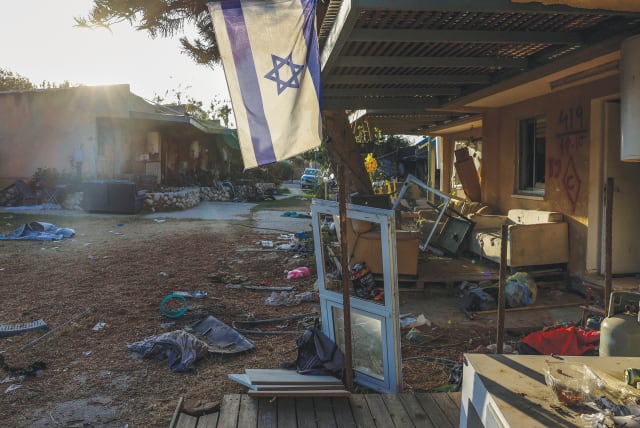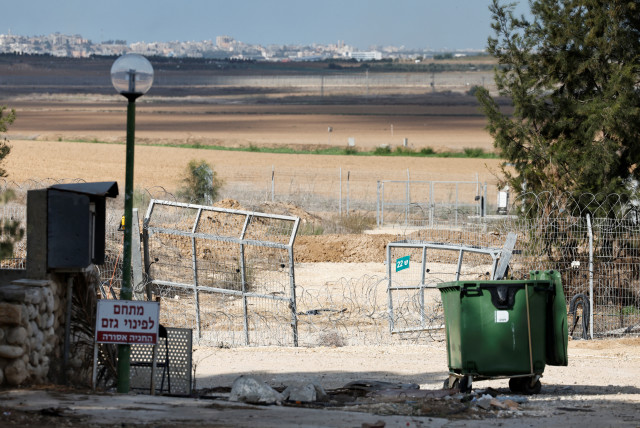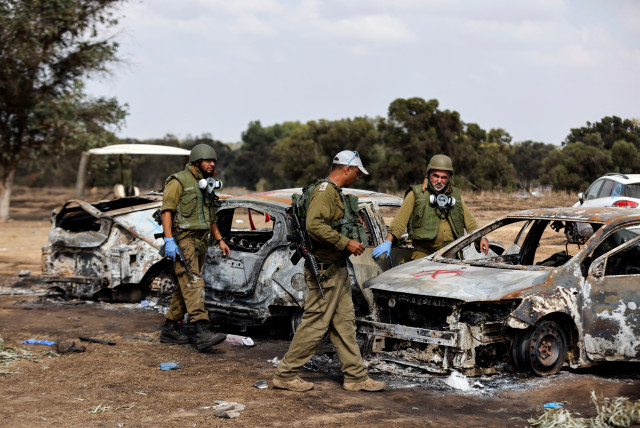IDF had no response plan for Hamas's October 7 massacre - NYT investigation

It took hours for the IDF and Israeli security forces to grasp the magnitude of the incident, according to the Times.
The IDF reportedly did not have an organized response plan for an invasion scenario by Hamas, according to an investigation conducted by The New York Times, citing past and present soldiers and officers.
If there was indeed such a plan, no one practiced it or followed it, and the Times investigation concluded that “the soldiers that day made it up as they went along.”
Their report, only days after publishing a separate investigation on Hamas’s sexual violence during the October 7 rampage, stated that the IDF believed, in the worst-case scenario, that the terrorist organization would only be able to break through the Israel-Gaza border fence in a few places but that they thought that Hamas “was neither interested in nor capable of launching a massive invasion.”
Israeli officials even reduced eavesdropping on Hamas radio traffic because they thought it was a waste of time.
The Times based their report on internal Israeli government documents they obtained.
As the picture became clearer in the weeks following October 7 it showed that Hamas had breached the fence in 30 different points and moved quickly towards the communities bordering Gaza.
The investigation indicates that it took hours for the Israeli security establishment to grasp the magnitude of the attack. Furthermore, the IDF units that formed the first line of defense in the settlements surrounding Gaza were not trained for the scenario either.
Israeli forces disorganized, relied on impromptu WhatsApp groups and Telegram channels
The report stated that Israeli forces were so disorganized that soldiers communicated in impromptu WhatsApp groups and relied on social media posts to obtain information. Helicopter pilots were told to rely on media reports and Telegram channels to target the terrorists responsible.
They also stated that beneath the Tel Aviv headquarters of the Defense Ministry, the Kirya, Israeli commanders were “trying to make sense of reports of Hamas rocket fire in southern Israel,” while operating from a bunker known as The Pit.
Dozens of officers, soldiers, and eyewitnesses were interviewed in the Times investigation and many spoke only on condition of anonymity.
The first units deployed were also relatively small, which implied that even after the invasion there was still no understanding of the size of the attack. It wasn’t until 7:43 a.m. that the first order was issued to all emergency forces and available units to head south.
This followed a message from one of the bases along the border of the Gaza Strip regarding a terror attack on the base. The commander who warned of the attack had no idea how extreme it was. “The nation’s military leaders did not yet recognize that an invasion of Israel was already well underway,” the Times said.
One of the first IDF units to reach the scene was the Maglan Unit, which was about 30 minutes drive from the Gaza border communities that day. According to the investigation, the unit is mainly trained to fight in enemy territory, not to deal with an invasion. According to an officer in the unit who spoke to the Times, “There was no concrete mission that day, soldiers were instructed to take weapons and go out to save people.”
The report also claimed that some of the IDF units bordering Gaza were poorly trained and that military reservists were not prepared to quickly mobilize and deploy.
Additionally, when attacks began, soldiers in the area were “fighting for their lives instead of protecting residents nearby or coordinating a response to the invasion,” the report said. Soldiers had to abandon a base in Nahal Oz and leave behind the corpses of their fellow soldiers.
Kibbutz Re’im, home to the Gaza Division, was understaffed because of the Simchat Torah holiday. One soldier there told the Times that some soldiers didn’t know they were under attack until Hamas was in their sleeping quarters.
After losing contact with a base that was under attack, the Maglan Unit turned to Rafael Hayun, a civilian who was engaged in private intelligence gathering.
Hayun, a man in his 40s who lives in Netivot, received many WhatsApp messages that Saturday from civilians who were under fire and forwarded them to the Maglan forces. According to the investigation, even hours into the fighting, the unit had no idea that Kibbutz Kfar Aza was under attack, and the information about the invasion reached the unit’s personnel only around 11 a.m.
A senior officer who fought on October 7 said, “There were many heroes that day, but the army only needs heroes when things go horribly wrong.”
Jerusalem Post Store
`; document.getElementById("linkPremium").innerHTML = cont; var divWithLink = document.getElementById("premium-link"); if (divWithLink !== null && divWithLink !== 'undefined') { divWithLink.style.border = "solid 1px #cb0f3e"; divWithLink.style.textAlign = "center"; divWithLink.style.marginBottom = "15px"; divWithLink.style.marginTop = "15px"; divWithLink.style.width = "100%"; divWithLink.style.backgroundColor = "#122952"; divWithLink.style.color = "#ffffff"; divWithLink.style.lineHeight = "1.5"; } } (function (v, i) { });


